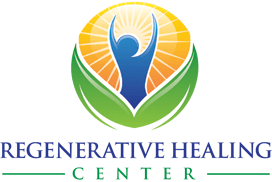What is Prolotherapy?
Prolotherapy is a treatment that builds and heals tissues including tendon, ligaments and joints. The word prolo is a shortened version of proliferative. By placing a solution into the injured area, the area responds by growing stronger tissue. When the tendon or ligament is stronger, the pain will decrease and frequently disappear. With prolotherapy, many patients who have had multiple other treatments with no success finally get pain relief.
What kinds of conditions respond to prolotherapy?
Any injuries involving tendons or ligament are likely to improve with prolotherapy. Some examples include tennis elbow, which is a tendon injury or an ankle sprain, which is a ligament injury. Also, arthritic joints respond beautifully to prolo. Some conditions are not thought of as a ‘ligament’ problem but ligament weakness is the underlying problem. An example is carpal tunnel syndrome, a pinched nerve at the wrist that causes pain, numbness, tingling and in more severe cases, weakness in the hand. By strengthening the ligaments in the wrist and elbow, the wrist mechanics improve and that removes the pressure on the nerve.
I thought that arthritis is irreversible so how can that be treated with prolo?
Prolotherapy improves arthritis by strengthening the ligaments and tendons around the joint. With early arthritis, prolo can help support the joint by strengthening the tissue around the joint. Not only does the pain improve but this can also slow the progression of arthritis. Joint arthritis is generally thought of as a progressive disease but prolotherapy can help slow or stop that progression.
What about more advanced arthritis?
Even with more severe arthritis, prolo can help reduce or eliminate the pain. Much of the pain from arthritis is from the ligaments and soft tissue surrounding the joint. I have had many patients who come in and tell me they have had knee pain for a month or two. We get an x-ray and see bone-on-bone arthritis, which means it is very advanced. Chances are, the arthritis was advanced for many months or even years but the patient had no pain. But the pain happens when the ligaments and capsule surrounding the knee become irritated and then painful. By strengthening the soft tissue around the joint with prolo, the arthritis won’t reverse but the pain will get better. Another option may be a joint replacement. Prolo is a great option for someone who wants to postpone a knee replacement either because they are very young or too frail to have a replacement or if they simply want to avoid having surgery.
What type of solution do you use?
Usually we use a dextrose solution. When placed onto an injured area, the body responds by releasing growth factors that promote the growth of stronger tissue so it is basically stimulating the body to generate its own healing. For more stubborn problems a stronger solution can be used but that is usually not necessary.
Is the procedure painful?
Most patients tolerate prolotherapy very well but any procedure that involves injections can be difficult for some. I have 2 goals during every treatment. One is to make the patient all better. The other is to minimize pain during the procedure. I achieve this with freezing spray and in certain situations block the nerve that would cause pain. Also, for any patient anxious about the pain and procedure, we offer nitrous oxide (laughing gas.). That takes the pain and anxiety out of the procedure.
How quickly do patients see results?
Often there is improvement with the 1st treatment but it can take 2-3 treatments before one starts to see results. It is important to realize that this is not like a steroid injection where you are blocking pain and suppressing the body’s inflammatory reaction. With that approach, you may get pain relief but that may not be taking care of the underlying problem that is causing the pain. Thus, the result is often temporary. Prolotherapy on the other hand is building tissue and this is achieved with a series of treatments. On average, this takes 3-4 treatments. The good news is that once it is better the results are often long-term. That is because we haven’t just suppressed pain; the tissue is healed.
It sounds very good but is there any proof that prolotherapy works?
There is very good data to support prolotherapy in the medical literature. Prolo has been around since the 1950’s. For several decades most of the work was done in small private office settings,. While there have been many happy satisfied patients, that is not the kind of setting where medical research is generally done. Over the last 15 years there have been more studies that have demonstrated the effectiveness of prolo. Research studies are graded by the methods of the study. A randomized double blind study is the highest standard. In prolotherapy, there are such studies for neck pain, back pain, knee arthritis and tennis elbow that show excellent results. As there are more physicians practicing prolotherapy and even at some universities, we can expect more studies confirming the good results already seen.
So who should seek treatment with prolotherapy?
Anyone with pain from a tendon, ligament or joint, which is most pain conditions, if they want to get better without surgery or drugs.
Do you use any treatments for pain besides prolotherapy?
Absolutely. My practice is not one-size-fits-all. We individualize our treatments to every patient and every condition. Ozone therapy can help with many pain conditions as well, sometimes with prolotherapy and sometimes on its own. Platelet treatment may be called for with certain tears. We offer a wide variety of treatments that I look forward to discussing more.
